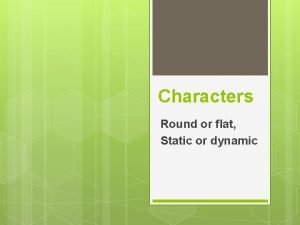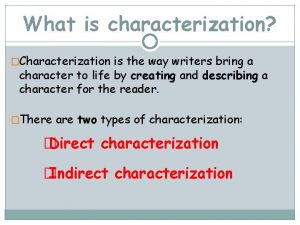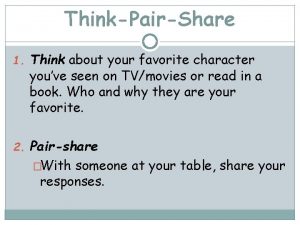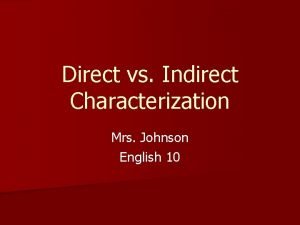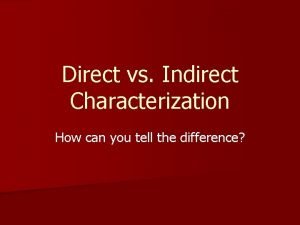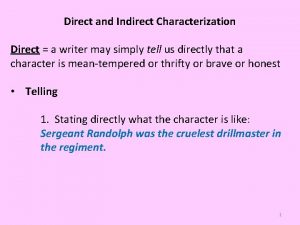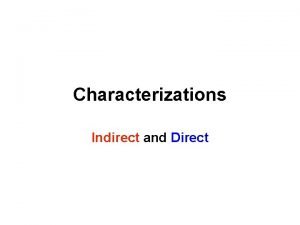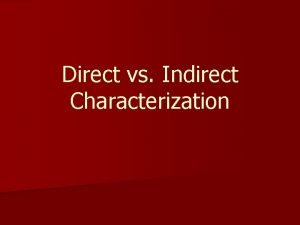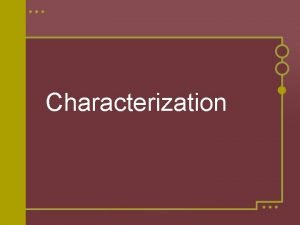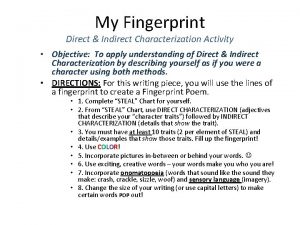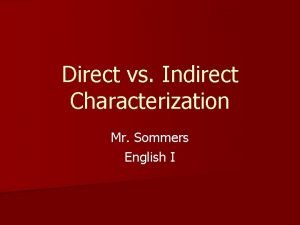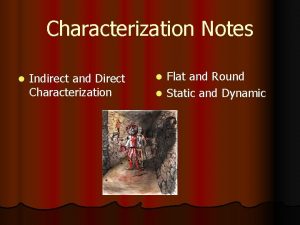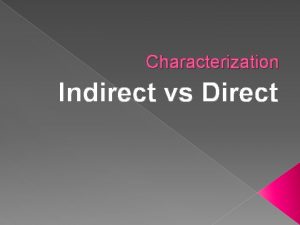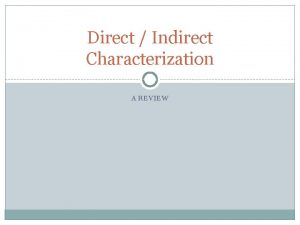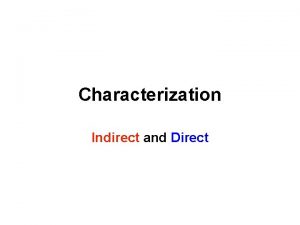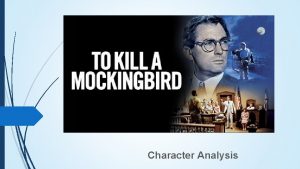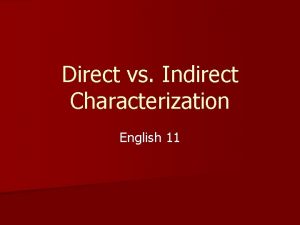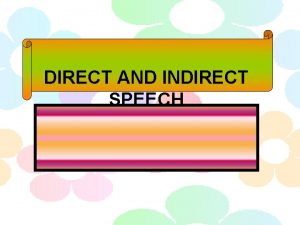Characterization Notes l Indirect and Direct Characterization Flat

















- Slides: 17

Characterization Notes l Indirect and Direct Characterization Flat and Round l Static and Dynamic l

Characterization l. Process by which the writer reveals the personality of a character.

Direct Characterization l. Direct Characterization: When the narrator or another character tells us what a person is like. l Ex: Jason was a tall, broad-shouldered football player who always had a smile on his face.

Indirect Characterization l. Indirect Characterization: shows things that reveal the personality of the character. l Ex: Jody ran up the stairs to her room, tears streaming down her face, and slammed her door loudly, hoping her mother would hear.

We use the STEAL method to indirectly characterize characters.

The S in Steal l We can learn about a character by what they SAY Ex. “I do not believe in birthdays and will not buy you a gift. ”

The T in Steal l We can learn about a character by what they THINK Ex. Romeo dreamt of meeting Juliet and having Lord Capulet hug him.

The E in Steal l We can learn about a character by their EFFECT ON OTHERS Ex. When all the girls saw John, their eyes lit up and lingered upon him.

The A in Steal l We can learn about a character by their ACTIONS Ex. Jonathan kicked the small dog

The L in Steal l We can learn about a character by their LOOKS Ex. Voldemort’s favorite color is black and he always wears it.

l 4: 41 https: //www. youtube. com/watch? v=blyg. A -g. GEbw l https: //www. youtube. com/watch? v=Ob. Wi QPqb. Fqo&index=3&list=PLW 9 Us 1 Wv. PTxp 6 j. CTJ 1 h. Iy. YBu. GOt 3 -nh. Zd l https: //www. youtube. com/watch? v=q. S 36 8 i. Xc. Uvk

Your Turn Look for examples of both direct and indirect characterization from the following passage in “Thank You, M’am, ” a short story by Langston Hughes: l She was a large woman with a large purse that had everything in it but a hammer and nails. It had a long strap, and she carried it slung across her shoulder. It was about eleven o’clock at night, and she was walking alone when a boy ran up behind her and tried to snatch her purse. The strap broke with the single tug the boy gave it from behind. But the boy’s weight and the weight of the purse combined caused him to lose his balance so, instead of taking off full blast as he had hoped, the boy fell on his back on the sidewalk, and his legs flew up. The large woman simply turned around and kicked him right square in his blue-jeaned sitter. Then she reached down, picked the boy up by his shirt front, and shook him until his teeth rattled.

Character Development: l Round Character—a well-developed character with varied traits, both good and bad. l Ex: Ariel, in Disney’s The Little Mermaid, has positive traits, like being loving and courageous, but she also has less flattering traits like being forgetful and disobedient. She is a welldeveloped character with many sides.

Character Development: l Flat Character—a less-developed character with one or a few traits; he/she is usually one-sided or stereotypical. l Ex: Think of dumb blonde characters in many teen movies— they are usually selfish, bossy, and mean. We never see them being nice or having problems of their own. They are one-sided and less developed.

Character Change: l Dynamic Character—a character that develops and changes over the course of a story due to a conflict or newfound understanding. l Ex: Scrooge is selfish and mean in the beginning of A Christmas Carol, but later becomes generous and selfless when he realizes his sins. He changes because of what happens to him in the story.

Character Change: l Static Character—a character who remains the same over the course of the entire story. l Ex: Cinderella’s stepmother is mean in the beginning of the fairytale and mean at the end. She never changes.

Here’s a trick to help you remember the definitions: Round=Many Characteristics l Flat=Few Characteristics l Static=Same and Dynamic=Different l Your Turn: Think back to “The Most Dangerous Game. ” Who is flat and who is round? Why? Who is static and who is dynamic? Why?
 Meaning of direct characterization
Meaning of direct characterization Indirect and direct characterization
Indirect and direct characterization Difference between flat and static character
Difference between flat and static character Direct characterizations
Direct characterizations Indirect and direct characterization
Indirect and direct characterization Direct and indirect characterization
Direct and indirect characterization Direct characterization.
Direct characterization. Direct characterization
Direct characterization About my character
About my character What is indirect characterization
What is indirect characterization Teaching direct and indirect characterization
Teaching direct and indirect characterization Indirect characterization defintion
Indirect characterization defintion Indirect and direct characterization
Indirect and direct characterization What is direct characterization
What is direct characterization Characterization speech
Characterization speech Direct and indirect characterization activities
Direct and indirect characterization activities The crucible characterization
The crucible characterization What is indirect characterization
What is indirect characterization


